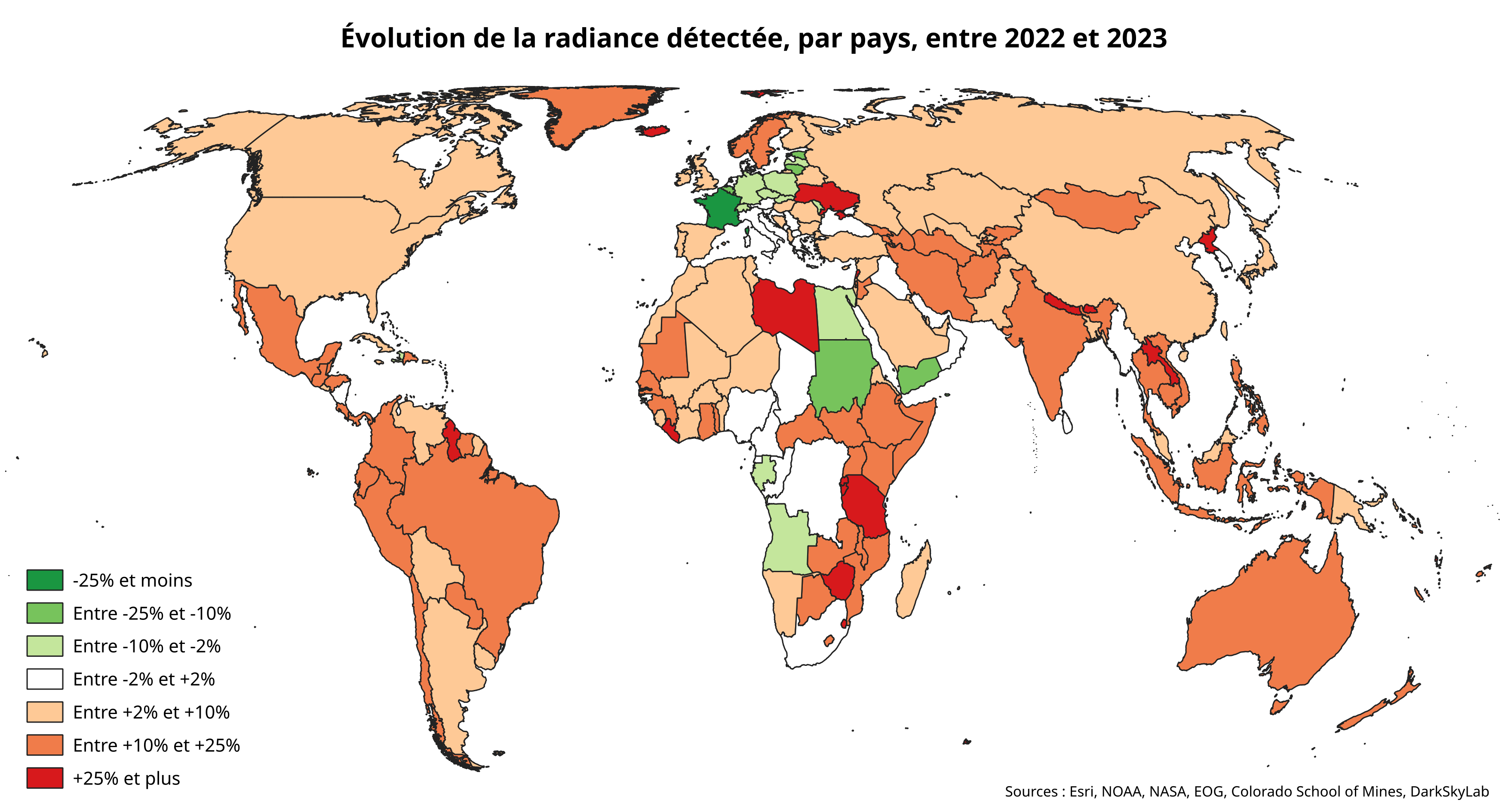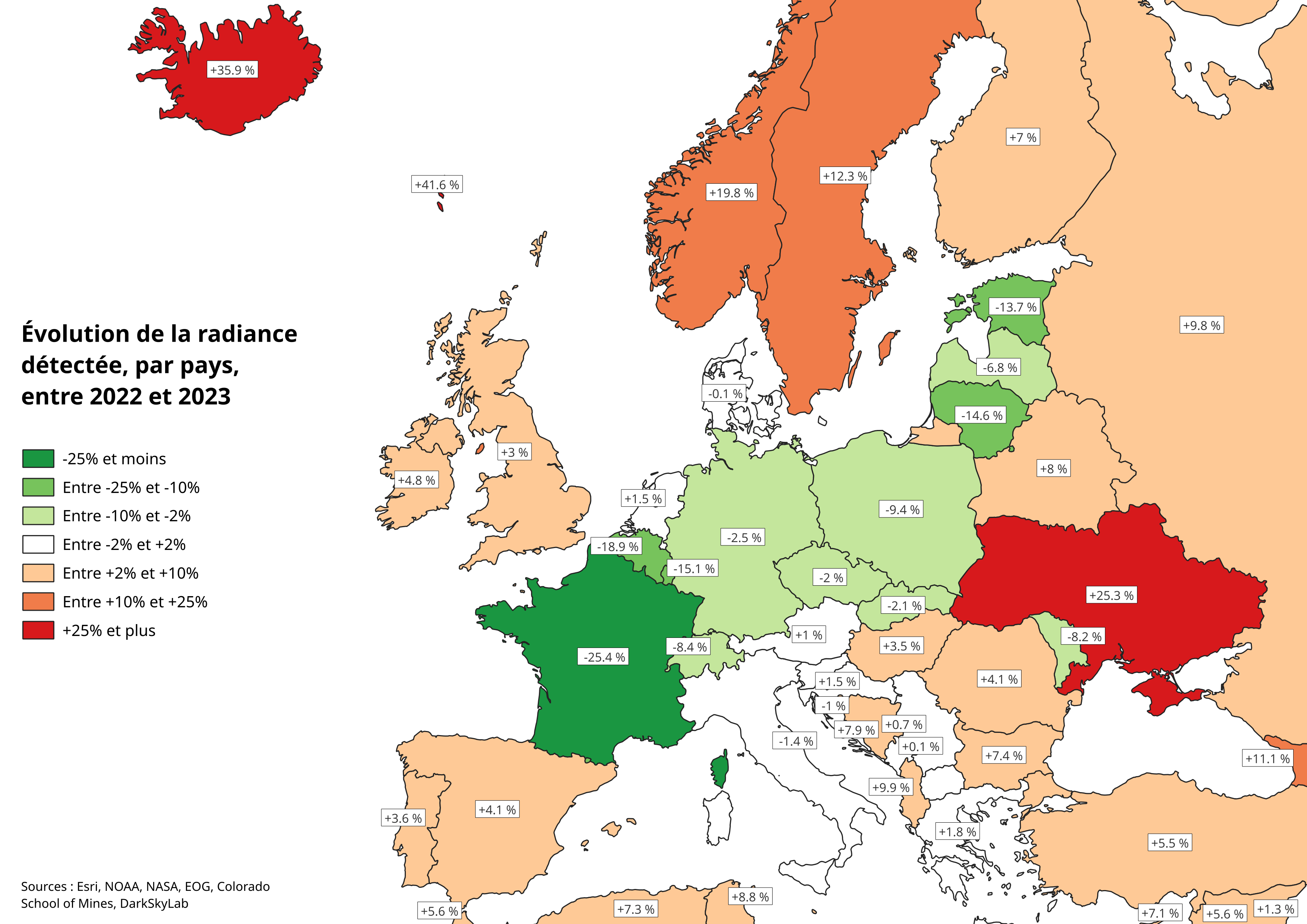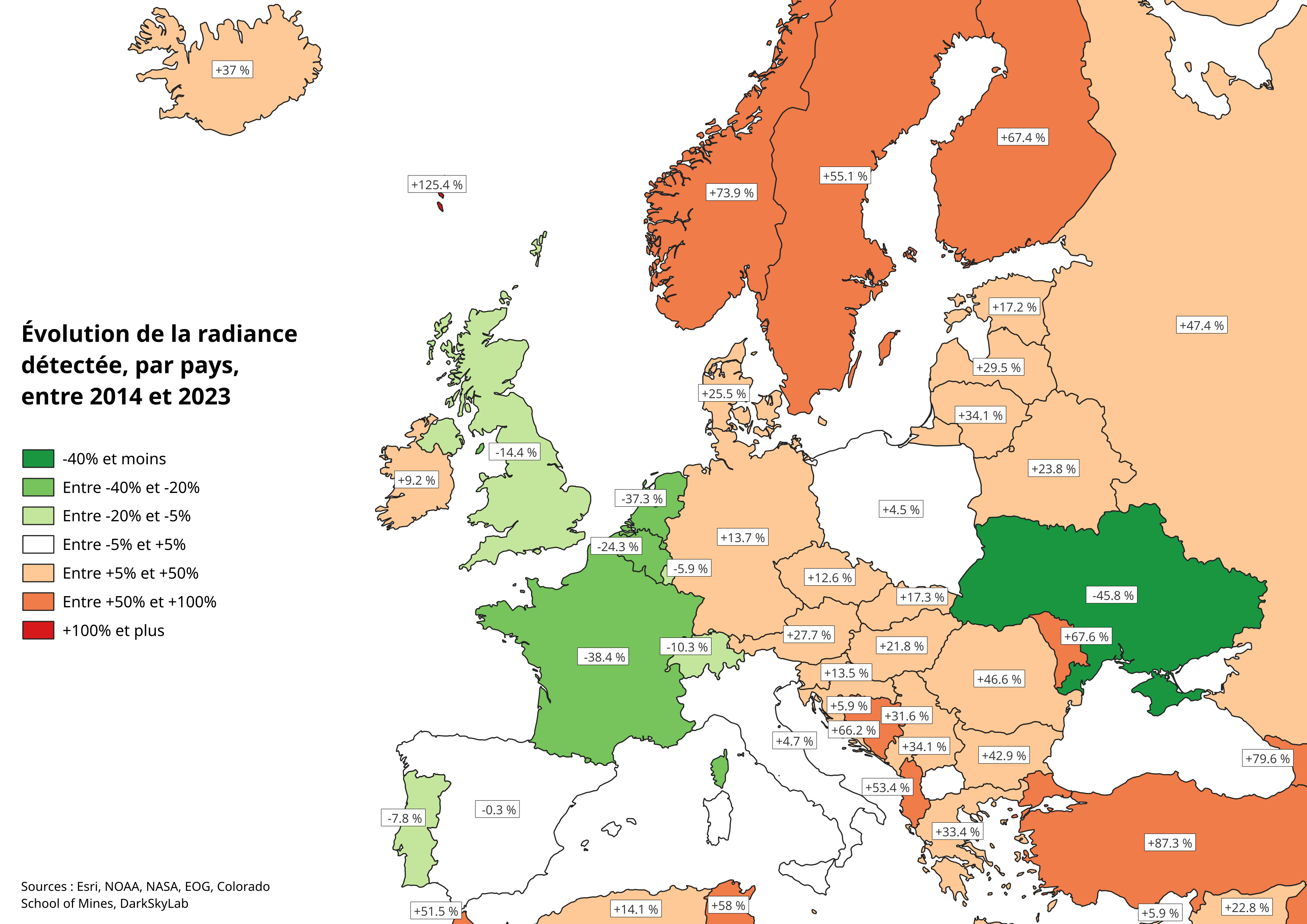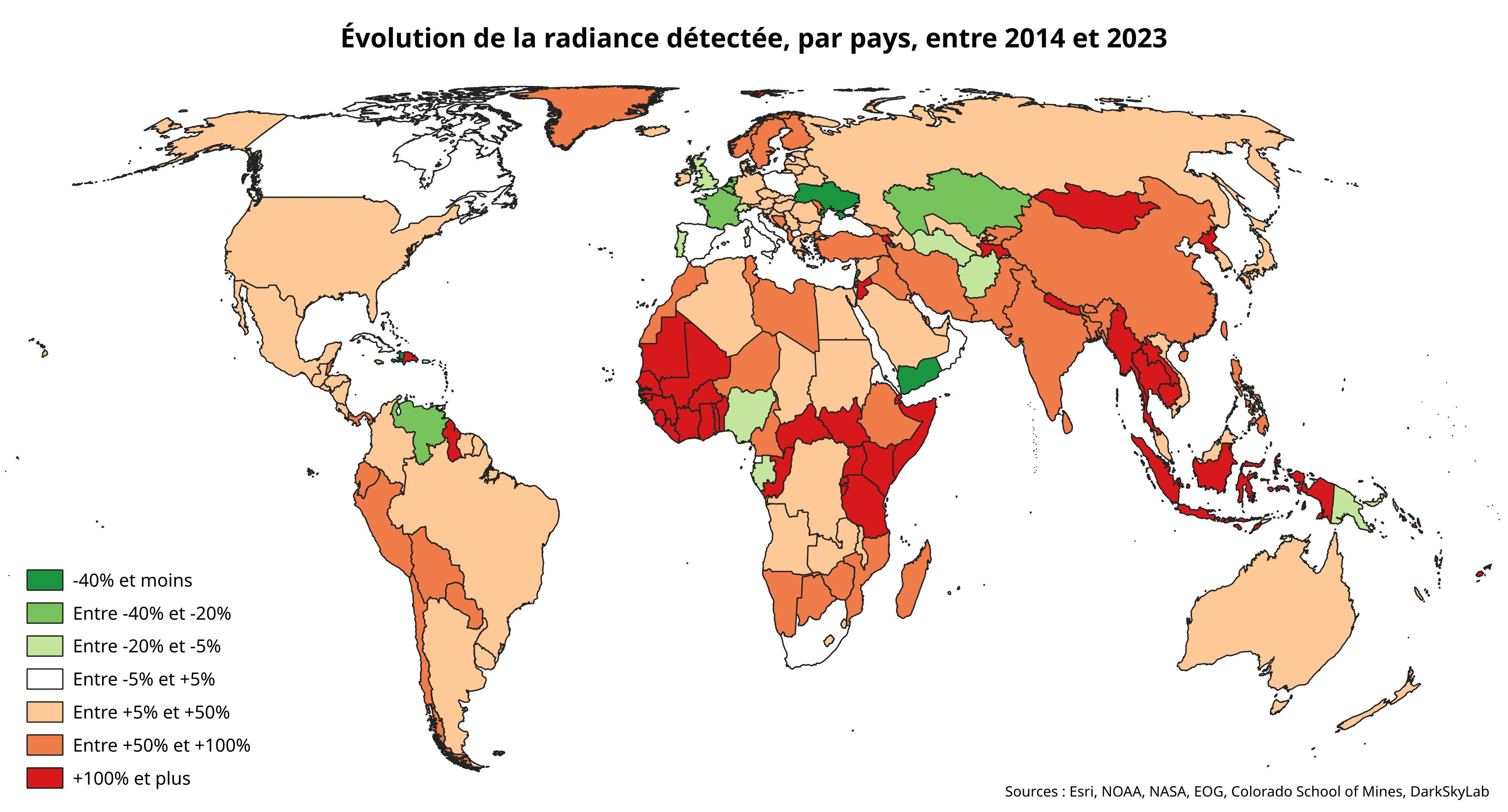France, world champion in lighting reduction
June 24, 2024 - Christophe Plotard

Trends in radiance detected by country between 2022 and 2023
Radiance levels (light emissions) measured by satellite fell by 25% in France between 2022 and 2023, and by 38% in ten years. Excluding special cases (wars, etc.), mainland France is the world leader in terms of artificial light reduction.

Reduce lighting to consume less energy. At the end of 2022, this was one of the main slogans of the energy plans promoted by the French government. A study of nocturnal satellite images shows not only that this call was implemented, but that France was even the world champion in reducing light emissions last year.
Between 2022 and 2023, radiance levels (light radiation emitted from the ground) fell by 25.4% in mainland France.
These are the findings of an analysis of annual data collected by the VIIRS satellite sensor.
This massive reduction is mainly the result of measures to extinguish or lower public lighting implemented by many local authorities in the context of the energy crisis linked to the war in Ukraine.
However, the satellite data analyzed only concern light emissions detected in the middle of the night, i.e. at the times when the satellites passes overhead. They do not make it possible to assess lighting levels at other times, in particular at the beginning and end of the night, which are the time slots when the number of light sources switched on is at its highest.
As in France, several other European countries also saw significant drops in their radiance levels in 2023: -23.4% in Andorra (2nd in the world ranking), -18.9% in Belgium (4th), -15.1% in Luxembourg (6th), around -14% in Lithuania (8th) and Estonia (9th), -9.4% in Poland, -8.4% in Switzerland...
Elsewhere in the world, the sharpest falls were seen mainly in countries affected by war or serious crises: Sudan (-19.8%), Yemen (-14.7%), Haiti (-8.2%).
In total, between 2022 and 2023, only 18 overseas countries or territories recorded a drop of more than 5%, and only nine saw their light emissions fall by more than 10%.
In contrast, satellite-detected radiance levels rose in most areas of the world in 2023, particularly in emerging countries: +19.2% in Indonesia, +13.3% in Brazil, +11.4% in Mexico, +10.3% in India, +7.1% in China...
In Europe, apart from the special case of Ukraine, which has partly "reignited" (+25.3%), the biggest increases were seen in Iceland (+35.9%) and Scandinavia (+19.8% in Norway, +12.3% in Sweden). These trends must be approached with caution, however, as snow cover and the aurora borealis in these countries can amplify the radiance perceived by satellite.
In the French overseas territories, finally, the trend is upwards almost everywhere, particularly in Polynesia (+7.8%), Mayotte (+9.6%) and especially New Caledonia (+24.5%).

However, single-year trends may not be representative of long-term movements. To gain a better understanding of more structural trends, satellite data from 2023 were therefore also compared with those from 2014.
The verdict: in ten years, detected radiance has fallen by 38.4% in mainland France;
Is France once again world champion? At first glance, no: seven countries did "better" during this period. But all of them are experiencing particular contexts that make comparison tricky, if not irrelevant: volcanic activity in Vanuatu (-90.3%), the Vatican's very small surface area (-46.2%), wars and major crises in Yemen (-46.1%), Ukraine (-45.8%), Lebanon (-43.5%), Haiti (-40.6%) and Venezuela (-38.8%).
As for France, a significant part of the decline observed over ten years was achieved in 2023, and could therefore also be attributed to a context of cyclical crisis, in this case that of energy. However, before 2023, a structural downward trend was already observed, with regular decreases every year (except in 2017). So we'll probably have to wait for the annual data for 2024 to see a possible rebound or, on the contrary, a consolidation of the trend observed in 2023.
In the meantime, a comparison of 2014 and 2023 data identifies several other notable movements on a global scale. Among the declines, we can cite in particular that seen in the Netherlands (-37.3% in ten years), mainly linked to the reduction in agricultural greenhouse lighting since 2022 (for reasons linked, again, to energy prices).

Conversely, most of the world's countries have seen increases in light emissions over the last ten years. The most significant increases have been in emerging and developing countries: for example, 84.2% in China, 80% in India, 87.3% in Turkey, 68.7% in Iran, 109.7% in Thailand...
In the most developed countries, the strongest rises have again been in Scandinavia, with +73.9% in Norway, +67.4% in Finland and +55.1% in Sweden. Here again, further analysis is required to determine the role of snow cover and the aurora borealis in these trends.
Globally, averaged over all countries, satellite-detected radiance increased by 6% between 2022 and 2023, and by 30% over the last ten years.
